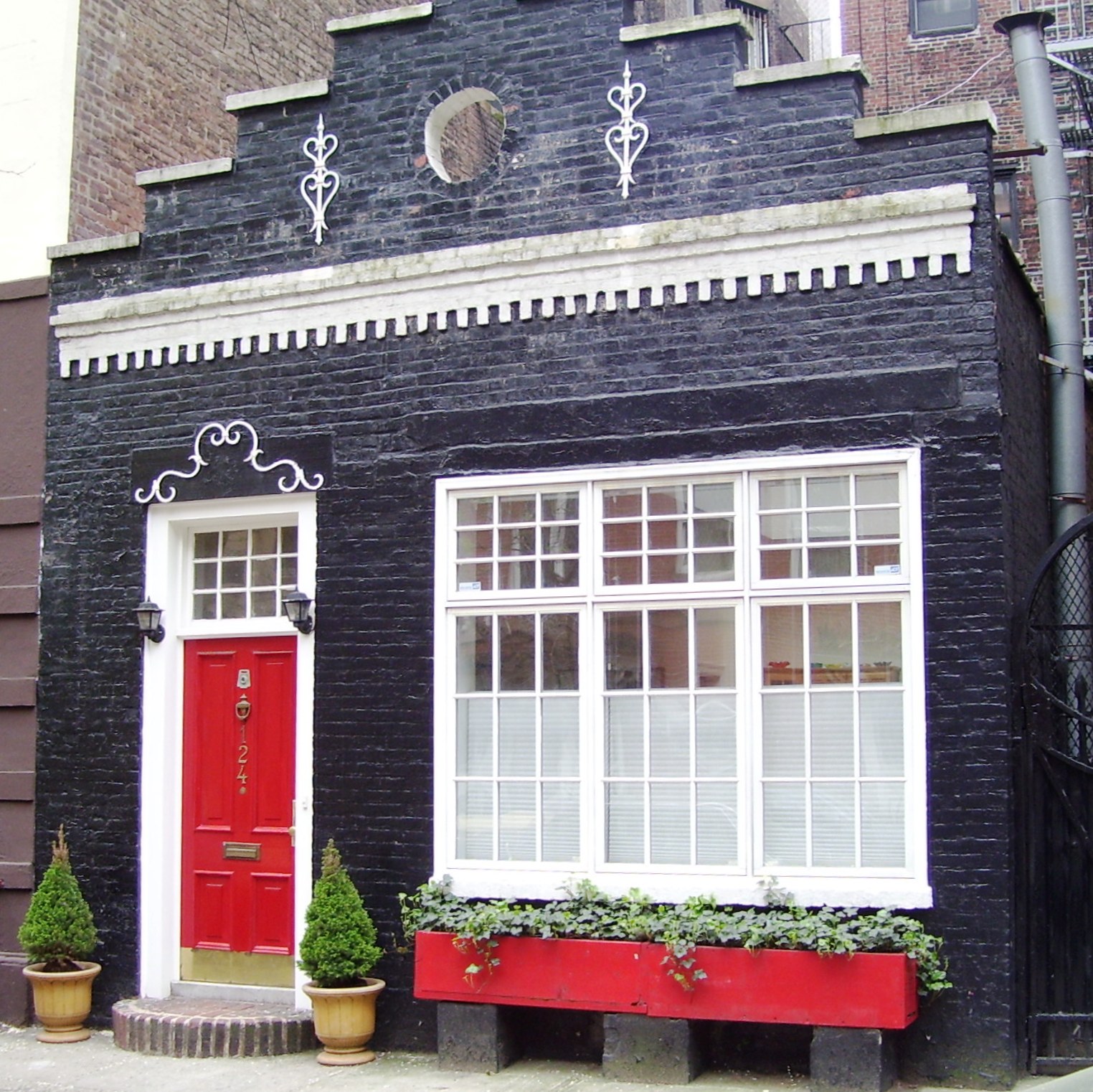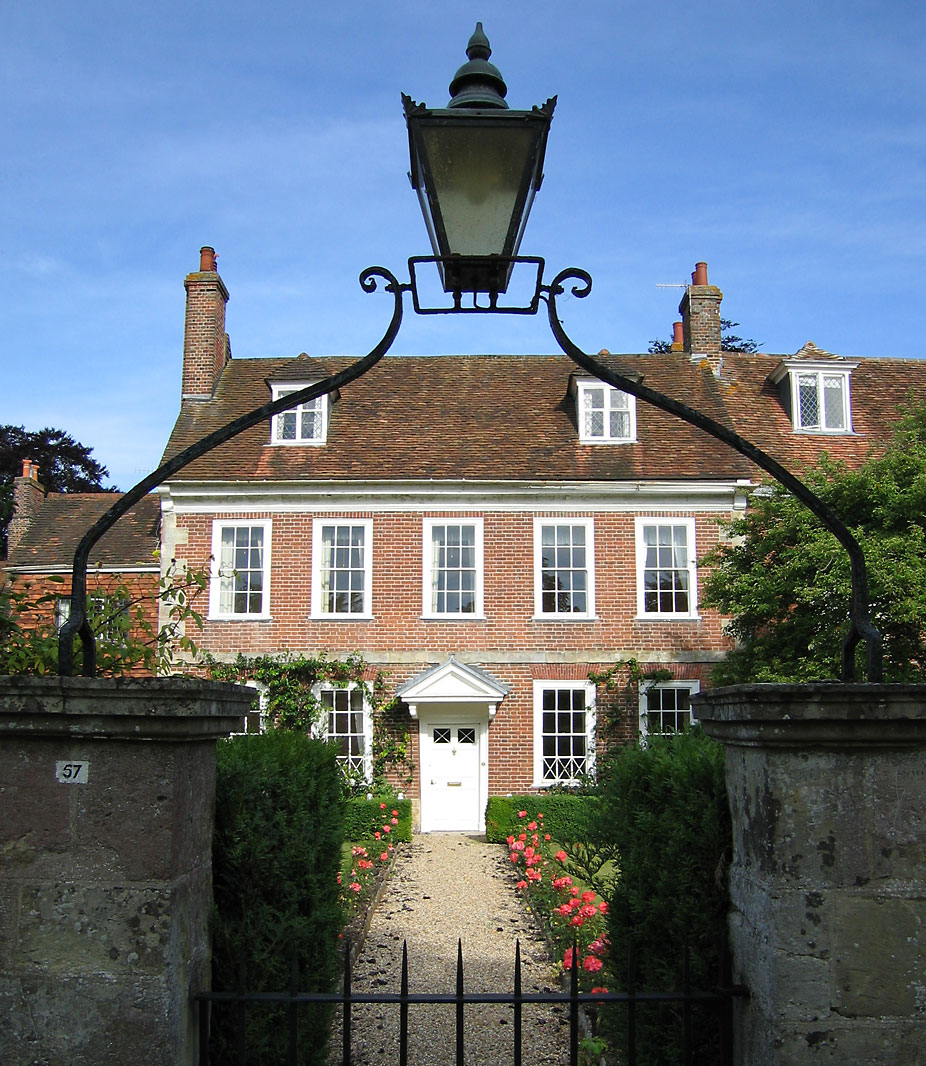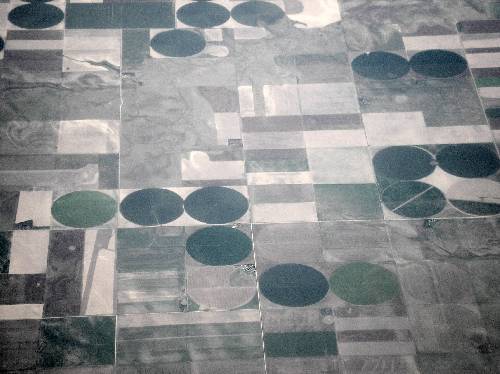|
Isaiah Paxson Farm
Isaiah Paxson Farm, also known as Burgess Lea, is a historic farm complex located in Solebury Township, Bucks County, Pennsylvania, Solebury Township, Bucks County, Pennsylvania. The complex consists of a house, double barn, carriage house, springhouse, shed, smoke house, and small barnyard building. All of the buildings are constructed of stone. The house was built in 1785, and has a -story, three-bay, gable-roofed main section with a -story kitchen section and one-story shed addition. It is in the Georgian architecture, Georgian style. ''Note:'' This includes It was added to the National Register of Historic Places in 1984. References External links Paxson Barn, (Solebury Township), Solebury, Bucks County, PA 1 photo and 1 data page, at Historic American Buildings Survey Historic American Buildings Survey in Pennsylvania Farms on the National Register of Historic Places in Pennsylvania Georgian architecture in Pennsylvania Houses completed in 1820 Houses in Bucks C ... [...More Info...] [...Related Items...] OR: [Wikipedia] [Google] [Baidu] |
Solebury Township, Bucks County, Pennsylvania
Solebury Township is a township in Bucks County, Pennsylvania, United States. The population was 8,709 at the 2020 census. History Migrating English Quakers began to settle down in an area of Buckingham Township. Around 1702, this area was incorporated into a new township called Solebury—carved out of lands deeded to William Penn. Records indicate that sometime in 1703, Solebury Township had 24 landowners and farmers owning 28 tracts of land, each averaging about 414 acres. Solebury Township once included the area of present-day New Hope until the incorporation of The Borough of New Hope in 1837. Settlers began to move to Solebury Township after hearing about the township's fertile soils and location on the Delaware River. At first, moderately-sized log homes were constructed, followed by more traditional fieldstone houses. These fieldhouses can still be found in the township today. Solebury Township's resources were put to use, and industries began to spring up. While far ... [...More Info...] [...Related Items...] OR: [Wikipedia] [Google] [Baidu] |
Bucks County, Pennsylvania
Bucks County is a county in the Commonwealth of Pennsylvania. As of the 2020 census, the population was 646,538, making it the fourth-most populous county in Pennsylvania. Its county seat is Doylestown. The county is named after the English county of Buckinghamshire. Bucks County is part of the northern boundary of the Philadelphia–Camden– Wilmington, PA– NJ– DE– MD Metropolitan Statistical Area, more commonly known as the Delaware Valley. It is located immediately northeast of Philadelphia and forms part of the southern tip of the eastern state border with New Jersey. History Founding Bucks County is one of the three original counties created by colonial proprietor William Penn in 1682. Penn named the county after Buckinghamshire, the county in which he lived in England. He built a country estate, Pennsbury Manor, in Falls Township, Bucks County. Some places in Bucks County were named after locations in Buckinghamshire, including Buckingham and Buckingha ... [...More Info...] [...Related Items...] OR: [Wikipedia] [Google] [Baidu] |
Carriage House
A carriage house, also called a remise or coach house, is an outbuilding which was originally built to house horse-drawn carriages and the related tack. In Great Britain the farm building was called a cart shed. These typically were open fronted, single story buildings, with the roof supported by regularly spaced pillars. They often face away from the farmyard and may be found close to the stables and roadways, giving direct access to the fields. Current usages In modern usage, the term "carriage house" has taken on several additional, somewhat overlapping meanings: * Buildings that were originally true carriage houses that have been converted to other uses such as secondary suites, apartments, guest houses, automobile garages, offices, workshops, retail shops, bars, restaurants, or storage buildings. * Purpose-built secondary homes, also called accessory dwelling units or detached dwelling units, on the same lot as a primary residence. They have completely separat ... [...More Info...] [...Related Items...] OR: [Wikipedia] [Google] [Baidu] |
Springhouse
A spring house, or springhouse, is a small building, usually of a single room, constructed over a spring. While the original purpose of a springhouse was to keep the spring water clean by excluding fallen leaves, animals, etc., the enclosing structure was also used for refrigeration before the advent of ice delivery and, later, electric refrigeration. The water of the spring maintains a constant cool temperature inside the spring house throughout the year. Food that would otherwise spoil, such as meat, fruit, or dairy products, could be kept there, safe from animal depredations as well. Springhouses thus often also served as pumphouses, milkhouses, and root cellars. The Tomahawk Spring spring house at Tomahawk, West Virginia, was listed on the National Register of Historic Places in 1994. Gallery Image:springhouse.jpg, A small spring house near Collegeville, Pennsylvania. Image:15 21 197_indian_springs.jpg, Stone spring house at Indian Springs State Park. File:The Brewe ... [...More Info...] [...Related Items...] OR: [Wikipedia] [Google] [Baidu] |
Smoke House
A smokehouse (North American) or smokery (British) is a building where meat or fish is cured with smoke. The finished product might be stored in the building, sometimes for a year or more."Old Smokehouses" Accessed May 2010. History Traditional smokehouses served both as meat smokers and to store the meats, often for groups and communities of people. |
Georgian Architecture
Georgian architecture is the name given in most English-speaking countries to the set of architectural styles current between 1714 and 1830. It is named after the first four British monarchs of the House of Hanover— George I, George II, George III, and George IV—who reigned in continuous succession from August 1714 to June 1830. The so-called great Georgian cities of the British Isles were Edinburgh, Bath, pre-independence Dublin, and London, and to a lesser extent York and Bristol. The style was revived in the late 19th century in the United States as Colonial Revival architecture and in the early 20th century in Great Britain as Neo-Georgian architecture; in both it is also called Georgian Revival architecture. In the United States the term "Georgian" is generally used to describe all buildings from the period, regardless of style; in Britain it is generally restricted to buildings that are "architectural in intention", and have stylistic characteristics that are ty ... [...More Info...] [...Related Items...] OR: [Wikipedia] [Google] [Baidu] |
National Register Of Historic Places
The National Register of Historic Places (NRHP) is the United States federal government's official list of districts, sites, buildings, structures and objects deemed worthy of preservation for their historical significance or "great artistic value". A property listed in the National Register, or located within a National Register Historic District, may qualify for tax incentives derived from the total value of expenses incurred in preserving the property. The passage of the National Historic Preservation Act (NHPA) in 1966 established the National Register and the process for adding properties to it. Of the more than one and a half million properties on the National Register, 95,000 are listed individually. The remainder are contributing resources within historic districts. For most of its history, the National Register has been administered by the National Park Service (NPS), an agency within the U.S. Department of the Interior. Its goals are to help property owners a ... [...More Info...] [...Related Items...] OR: [Wikipedia] [Google] [Baidu] |
Burgess Lea Farm PA 02
__NOTOC__ Burgess may refer to: People and fictional characters * Burgess (surname), a list of people and fictional characters * Burgess (given name), a list of people Places * Burgess, Michigan, an unincorporated community * Burgess, Missouri, United States *Burgess, South Carolina, United States *Burgess, Virginia, United States *Burgess Township, Bond County, Illinois, United States *Burgess Park, London, England *Burgess Field Oxford, England *Burgess Hill, Sussex, England *Mount Burgess, Canadian Rockies *Burgess Branch, a tributary of Missisquoi River, Vermont, United States Other uses *Burgess (title), a political official or representative *Burgess Company, an American airplane manufacturer *Burgess GAA, an athletic club in Ireland See also *Burgess House (other), several buildings named *Burgess model, or Concentric zone model, a theoretical model in urban geography *Burgess reagent, used in organic chemistry *Burgess Shale, a fossil-bearing formation near Mount ... [...More Info...] [...Related Items...] OR: [Wikipedia] [Google] [Baidu] |
Historic American Buildings Survey
Heritage Documentation Programs (HDP) is a division of the U.S. National Park Service (NPS) responsible for administering the Historic American Buildings Survey (HABS), Historic American Engineering Record (HAER), and Historic American Landscapes Survey (HALS). These programs were established to document historic places in the United States. Records consist of measured drawings, archival photographs, and written reports, and are archived in the Prints and Photographs Division of the Library of Congress. Historic American Buildings Survey In 1933, NPS established the Historic American Buildings Survey following a proposal by Charles E. Peterson, a young landscape architect in the agency. It was founded as a constructive make-work program for architects, draftsmen and photographers left jobless by the Great Depression. It was supported through the Historic Sites Act of 1935. Guided by field instructions from Washington, D.C., the first HABS recorders were tasked with documenti ... [...More Info...] [...Related Items...] OR: [Wikipedia] [Google] [Baidu] |
Historic American Buildings Survey In Pennsylvania
History (derived ) is the systematic study and the documentation of the human activity. The time period of event before the invention of writing systems is considered prehistory. "History" is an umbrella term comprising past events as well as the memory, discovery, collection, organization, presentation, and interpretation of these events. Historians seek knowledge of the past using historical sources such as written documents, oral accounts, art and material artifacts, and ecological markers. History is not complete and still has debatable mysteries. History is also an academic discipline which uses narrative to describe, examine, question, and analyze past events, and investigate their patterns of cause and effect. Historians often debate which narrative best explains an event, as well as the significance of different causes and effects. Historians also debate the nature of history as an end in itself, as well as its usefulness to give perspective on the problems of the p ... [...More Info...] [...Related Items...] OR: [Wikipedia] [Google] [Baidu] |
Farms On The National Register Of Historic Places In Pennsylvania
A farm (also called an agricultural holding) is an area of land that is devoted primarily to agricultural processes with the primary objective of producing food and other crops; it is the basic facility in food production. The name is used for specialized units such as arable farms, vegetable farms, fruit farms, dairy, pig and poultry farms, and land used for the production of natural fiber, biofuel and other commodities. It includes ranches, feedlots, orchards, plantations and estates, smallholdings and hobby farms, and includes the farmhouse and agricultural buildings as well as the land. In modern times the term has been extended so as to include such industrial operations as wind farms and fish farms, both of which can operate on land or sea. There are about 570 million farms in the world, most of which are small and family-operated. Small farms with a land area of fewer than 2 hectares operate about 1% of the world's agricultural land, and family farms comprise abou ... [...More Info...] [...Related Items...] OR: [Wikipedia] [Google] [Baidu] |
Georgian Architecture In Pennsylvania
Georgian may refer to: Common meanings * Anything related to, or originating from Georgia (country) ** Georgians, an indigenous Caucasian ethnic group **Georgian language, a Kartvelian language spoken by Georgians **Georgian scripts, three scripts used to write the language ** Georgian (Unicode block), a Unicode block containing the Mkhedruli and Asomtavruli scripts **Georgian cuisine, cooking styles and dishes with origins in the nation of Georgia and prepared by Georgian people around the world * Someone from Georgia (U.S. state) * Georgian era, a period of British history (1714–1837) ** Georgian architecture, the set of architectural styles current between 1714 and 1837 Places * Georgian Bay, a bay of Lake Huron * Georgian Cliff, a cliff on Alexander Island, Antarctica Airlines * Georgian Airways, an airline based in Tbilisi, Georgia * Georgian International Airlines, an airline based in Tbilisi, Georgia * Air Georgian, an airline based in Ontario, Canada * Sky Georgia, ... [...More Info...] [...Related Items...] OR: [Wikipedia] [Google] [Baidu] |



_Team.jpg)
.jpg)
